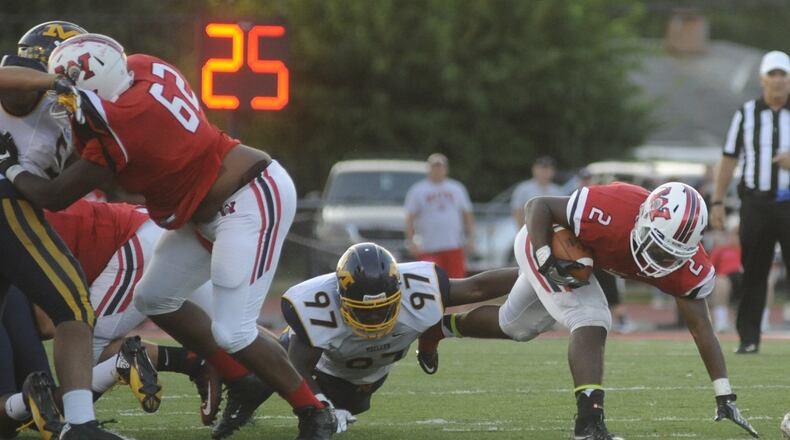1. What is it?
Many parts. It’s an effort by the OHSAA to “level the playing field” among all sports teams, girls and boys. A multi-faceted numerical formula will be used to rank every player on a roster consisting of school size, residence and a student’s secondary school history. There are three tiers to those factors that impact a multiplier. The total combined numerical value among students will determine which division a team will be assigned for the postseason.
Schools have three weeks to challenge enrollment factors. There will be three divisional release dates: April 6 for football, soccer and volleyball; June 1 for basketball and other winter sports; Aug. 3 for softball and baseball and other spring sports.
2. What’s the formula?
Start with a EMIS number. This is a value every school is assigned by the Ohio Department of Education and is based on demographic, attendance and course information. Combined, that produces an enrollment count (grades 9-11). Additional roster counts – Tier 0, Tier 1 or Tier 2 – are used as multipliers to every player. That value is added to the EMIS number for a final adjusted enrollment count.
3. How and why did this happen?
It’s a familiar storyline: public vs. private schools. Specifically, the privates’ domination of state championships.
- COVERAGE: OHSAA begins balance plan
- TIMELINE: History of competitive balance proposals
- COACHES: 'Right step? We will find out'
A proposed separation of publics and privates was first voted down by OHSAA members in 1978, but had been brewing long before. Another vote for separation also was voted down in 1993. There was strong sentiment by both sides about this, but a split would benefit neither.
Proposing a new Competitive Balance formula, the OHSAA’s initiative was also voted down three times from 2011-13 and finally passed in 2014.
4. What took so long?
It doesn’t seem possible in this era of evolving technology, but the OHSAA cited a software switch that hadn’t been approved and tested as one of the reasons for delaying implementation from its initial target of last fall. The delay also meant it could now match up the new formula with a new two-year enrollment cycle. Although awkward after so much publicity, that was good timing for the OHSAA.
5. What happens now?
That varies by sport. Teams that were on the top end of a division could bump into a higher division after the Competitive Balance factor. That will happen more in football because there are seven divisions – the most of any sport – which provides more chances for teams to be affected.
However, it should be noted football is the only sport in which a super Division I exists. These are the top 72 schools with the largest enrollments. That means most of those schools will not be affected by the Competitive Balance formula, no matter how greatly impacted. The only way a D-I football school could drop to D-II is to be overtaken – numerically – by a current D-II school.
FACEBOOK: For more high school sports you should like Marc Pendleton
6. Are public schools affected?
Absolutely. Open enrollment, transfer students and tuition-paying students at public schools all could be affected by a greater multiplying factor. Again, that depends on where the student resides and when a school switch occurred.
7. Who wins?
That’s relative to each school and sport. Know going in there will never be such thing as competitive balance in any sport, any state. Tradition, coaches, personnel and good fortune will make sure of that, none of which can be controlled. Attempting to strike a balance is the key issue. The OHSAA has said this is a process that will evolve.
About the Author
